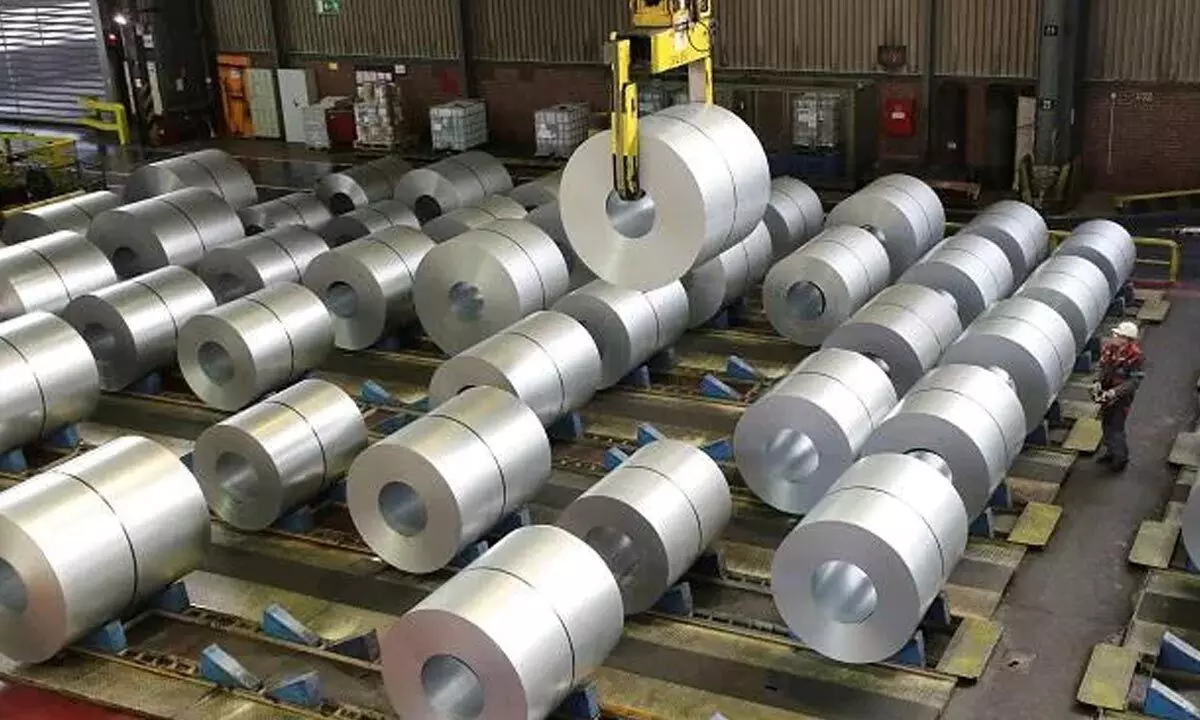Steel prices may fall to Rs60,000/tonne by Mar
Prices are still holding high because of continuing uncertainty over supply disruptions, decarbonization measures in China and geopolitical risks stemming from Russia-Ukraine war
image for illustrative purpose

Mumbai: Steel prices, which have been on a song for the past two years, are finally set to correct on weak seasonality, and may trade at around Rs 60,000/tonne by the end of the current fiscal year, down from the Rs 76,000/tonne peak it scaled last month, says a report.
Prices are still holding high because of the continuing uncertainty over supply disruptions, decarbonization measures globally, especially in China and geopolitical risks stemming from the Russia-Ukraine war, which has driven up raw material costs, Crisil said in a report on Monday. Price corrections are likely due to the onset of monsoon next month which will pull down demand as constructions will be on hold along with the likely lower premium realisation that domestic mills may get from exports, the report said.
According to Koustav Mazumdar, an associate director with the agency, the onset of the weak demand season because of the monsoon and less-lucrative exports mean domestic steel prices should begin easing and ultimately move towards Rs 60,000/tonne by March 2023, down from the Rs 76,000/tonne peak it scaled in just last month, which will still be well above the pre-pandemic levels. Flat steel prices could rise 3-5 per cent this fiscal year after surging over 50 per cent in 2021-22. Hetal Gandhi, a director at the agency, reasoned that despite a moderation in demand in January-March, steel prices inched up owing to higher input costs and buoyant exports. Also, domestic supply stayed tight, eliminating the differential between global landed and domestic prices, which was once nearly Rs 15,000/tonne.
On the other hand, export realization premia surged to $75/tonne in early May. While steel mills made the best use of elevated global prices, domestic demand began to waver. Soaring construction costs, and multiple price hikes by companies in the auto, consumer appliances and durables space drove down demand in Q4FY22. In Q1FY23, domestic demand could see an optical recovery due to low-base, but consumer sentiment remains sluggish with higher input costs leading to postponement of purchases and construction decisions. Similarly, elevated prices and the resultant inflationary pressure impacted sentiment across the globe, eventually leading to a price correction. Since April, hot-rolled coil prices declined over 25 per cent in Europe and the US to $1,150-1,200/tonne from a peak of $1,600 in mid-March.
While domestic exports to these markets will remain high in Q1, retreating prices will narrow the arbitrage for domestic mills. To sum up, exports will remain range bound at 13-14 million tonne this fiscal on the back of revised quota to Europe and supply constraints in Southeast Asia. However, the agency does not see a free fall as a myriad of uncertainties will limit a freefall in domestic prices, which though are showing signs of fatigue after a relentless rally over the past two years as the monsoon season sets in. The report attributes the still firm prices to the heightened geopolitical risks that have limited the price corrections, which started moderating early this year. However, the Russian invasion of Ukraine in late February, cranked the prices up again on supply-disruption fears.

